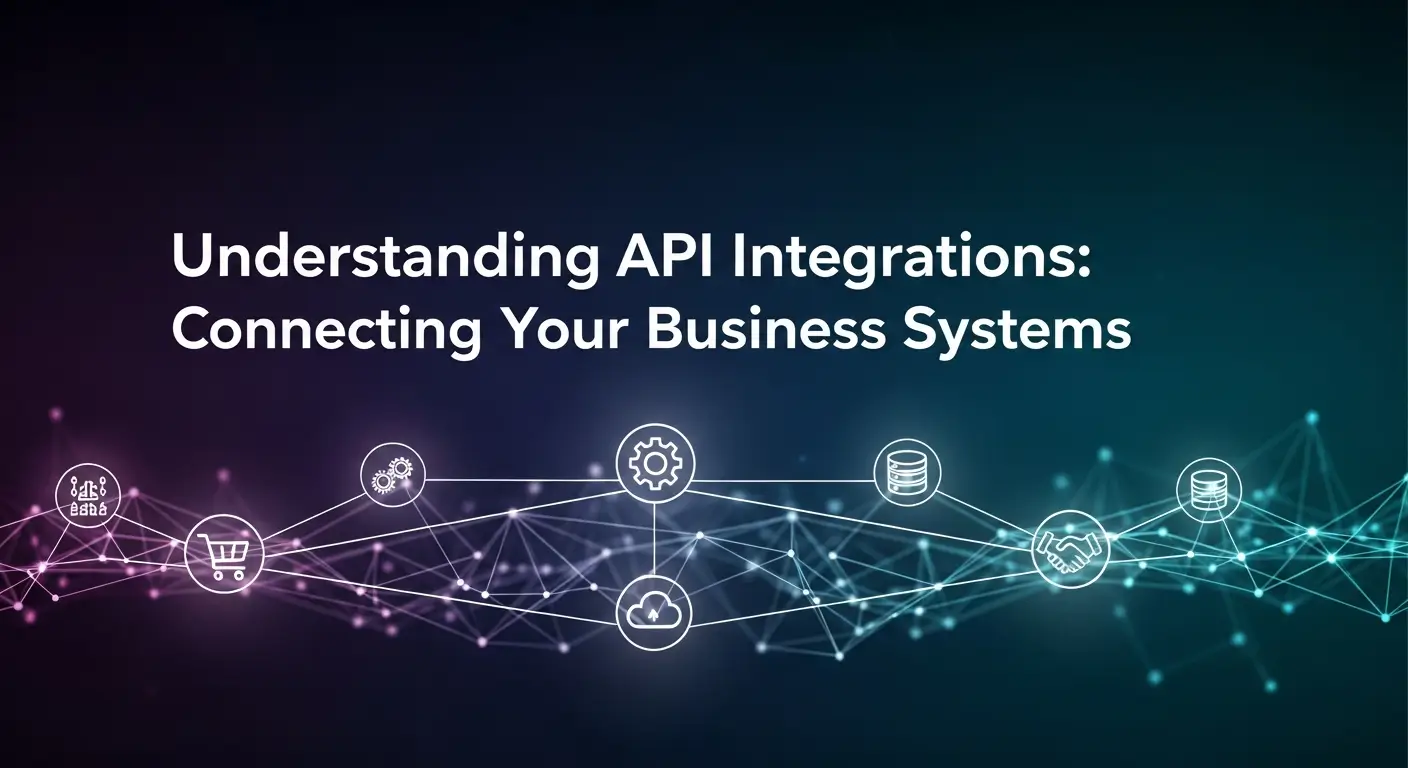In today’s fast-paced digital landscape, businesses are constantly seeking ways to optimize operations, enhance efficiency, and deliver superior customer experiences. One of the most powerful tools enabling this transformation is API integration. If you’ve ever wondered how different software applications “talk” to each other, sharing data and automating workflows, you’re looking at the magic of APIs. This comprehensive guide will delve into what API integrations are, why they are crucial for modern businesses, and how they can revolutionize your operational efficiency and growth.
What Exactly is an API and API Integration?
Before we dive into the benefits, let’s clarify the core concepts.
API stands for Application Programming Interface.Think of an API as a waiter in a restaurant. You (the customer) want to order food (data or a service) from the kitchen (another software application). You don’t go into the kitchen yourself; you tell the waiter what you want, the waiter takes your order to the kitchen, gets the food, and brings it back to you. The API is that waiter – a set of definitions and protocols that allows different software applications to communicate with each other. It defines the kinds of calls or requests that can be made, how to make them, the data formats that should be used, and the conventions to follow.
API Integration, therefore, is the process of connecting two or more applications through their APIs to enable them to exchange data and automate workflows. This creates a seamless flow of information between disparate systems, eliminating manual data entry, reducing errors, and freeing up valuable human resources for more strategic tasks.
The Undeniable Benefits of API Integrations for Your Business
Why are so many businesses, from startups to enterprises, investing heavily in API integrations? The reasons are compelling and directly impact a company’s bottom line and competitive advantage.
1. Enhanced Efficiency and Automation
This is arguably the most significant benefit. Manual data transfer between systems is not only tedious but also prone to human error. API integrations automate these processes. Imagine a customer placing an order on your e-commerce website. An API integration can automatically:
- Update your inventory management system.
- Generate an invoice in your accounting software.
- Trigger a shipping label creation in your logistics platform.
- Send a confirmation email to the customer.
This seamless automation drastically reduces the time and effort required for routine tasks, allowing employees to focus on higher-value activities.
2. Improved Data Accuracy and Consistency
When data is manually entered across multiple systems, inconsistencies and errors are almost inevitable. API integrations ensure that data is synchronized across all connected applications in real-time or near real-time. This means every department is working with the most accurate and up-to-date information, leading to better decision-making and fewer operational hiccups.
3. Better Customer Experience
A unified view of customer data, made possible through API integrations, enables businesses to offer a more personalized and consistent customer experience. For example, a CRM system integrated with a customer support platform allows support agents to instantly access a customer’s purchase history, past interactions, and preferences. This leads to quicker resolutions, more relevant recommendations, and overall higher customer satisfaction.
4. Scalability and Flexibility
As your business grows, you’ll likely adopt new software solutions. API integrations make it easier to connect these new tools into your existing ecosystem without overhauling your entire infrastructure. This flexibility allows your business to adapt quickly to changing market demands and technological advancements, supporting sustainable growth without encountering significant bottlenecks. Effective web development services often include expertise in building and integrating APIs to ensure your online platforms are robust and scalable.
5. Cost Savings
While there’s an initial investment in setting up integrations, the long-term cost savings are substantial. Reduced manual labor, fewer errors, optimized processes, and improved productivity all contribute to a significant return on investment. Furthermore, by making existing software work more effectively together, businesses can often delay or avoid expensive new software purchases.
6. Deeper Insights and Analytics
When all your business data flows into a centralized system or data warehouse via APIs, it becomes a goldmine for analytics. You can gain a holistic view of your operations, identify trends, predict future outcomes, and make data-driven decisions that propel your business forward.
Common Examples of API Integrations in Action
To truly grasp the power of API integrations, let’s look at some real-world examples:
- E-commerce Platform & Inventory Management: When a product is sold online, the inventory system is immediately updated to reflect the reduced stock, preventing overselling.
- CRM & Marketing Automation: Customer data from your CRM (e.g., new leads, customer segments) flows directly into your marketing automation platform to trigger personalized email campaigns or targeted ads.
- Accounting Software & Payment Gateways: When a customer makes a payment, the transaction details are automatically recorded in your accounting software, simplifying reconciliation.
- HR Software & Payroll Systems: Employee data changes (e.g., new hires, salary adjustments) in HR software are automatically synced with the payroll system to ensure accurate and timely payments.
- Customer Support & Knowledge Bases: Support agents can quickly search and retrieve relevant articles from a knowledge base directly within their support tool to provide faster answers.
- Social Media & Analytics Tools: Data from your social media platforms can be pulled into analytics tools to provide insights into audience engagement and campaign performance.
Types of APIs You Might Encounter
Not all APIs are created equal. Understanding the different types can help you navigate the integration landscape:
- REST (Representational State Transfer) APIs: These are the most common type of APIs on the web, known for their flexibility and scalability. They are stateless, meaning each request from a client to a server contains all the information needed to understand the request.
- SOAP (Simple Object Access Protocol) APIs: Older and more rigid than REST, SOAP APIs use XML to define the structure of messages. They are often used in enterprise-level applications where strong security and transactional reliability are critical.
- GraphQL APIs: A newer query language for APIs, GraphQL allows clients to request exactly the data they need, no more and no less. This can lead to more efficient data fetching, especially for complex applications.
- Open APIs (Public APIs): These are publicly available APIs that developers can use to integrate with popular services like Google Maps, Twitter, or PayPal.
- Partner APIs: These APIs are exposed only to specific partners, enabling closer collaboration between businesses.
- Internal APIs (Private APIs): Used within an organization to connect different internal systems and services, enhancing internal communication and data flow.
Implementing API Integrations: Key Considerations
Integrating APIs requires careful planning and execution. Here are some key factors to consider:
- Identify Your Business Needs: What specific problems are you trying to solve? Which systems need to communicate? Clearly define your objectives before embarking on any integration project.
- Choose the Right Integration Strategy:
- Point-to-Point Integrations: Connecting two applications directly. Simple for a few integrations but can become complex and difficult to manage with many systems.
- Integration Platform as a Service (iPaaS): Cloud-based platforms that provide tools and services to connect various applications, data sources, and APIs. iPaaS solutions often offer pre-built connectors, monitoring, and robust security features, making complex integrations more manageable.
- Enterprise Service Bus (ESB): A more traditional, on-premise architectural pattern for connecting enterprise applications.
- Security: APIs can be a gateway for data exchange, so robust security measures are paramount. This includes authentication, authorization, encryption, and regular security audits.
- Error Handling and Monitoring: What happens when an integration fails? Implement robust error handling mechanisms and comprehensive monitoring to quickly identify and resolve issues.
- Scalability: Ensure your integration solution can handle increased data volumes and future growth without performance degradation.
- Documentation: Clear and comprehensive documentation for your APIs and integrations is crucial for maintenance, troubleshooting, and future development.
- Expertise: API integration can be complex. You may need to leverage in-house development teams or engage with experienced integration specialists or consultants. Finding a reliable web development company in Noida can provide access to specialized expertise in API integration.
The Future is Connected: Embracing API Integrations
In an increasingly interconnected world, businesses that embrace API integrations will be the ones that thrive. They will be more agile, more efficient, and better equipped to meet the evolving demands of their customers and the market. From automating mundane tasks to unlocking deep analytical insights, API integrations are no longer a luxury but a strategic imperative for any forward-thinking organization.
Are you ready to streamline your operations, enhance customer satisfaction, and drive significant growth? Explore how powerful API integrations can transform your business. Contact us today for a personalized consultationand discover the seamless connectivity solutions that await you!


